At the end of spring, a wonderful time comes – the first flowers blossom. Beautiful field flowers, which are full of green meadows, are not inferior to them forest and garden inflorescences.
Who among us did not collect flowers to put a bouquet at home? Many carefully preserve the dried roses, received as a gift on one of the memorable days. Unfortunately, ordinary bouquets quickly wither, begin to crumble, they have to be thrown away. The usual drying of the petals between the pages of the books is a good memory, but not an ornamental decoration of the house. Meanwhile, Japanese masters of ikebans successfully use dried flowers (as, indeed, other natural materials) to create full-fledged decorations of the home interior. At the same time, each of them is individually, linked to your memories, dear to your heart.
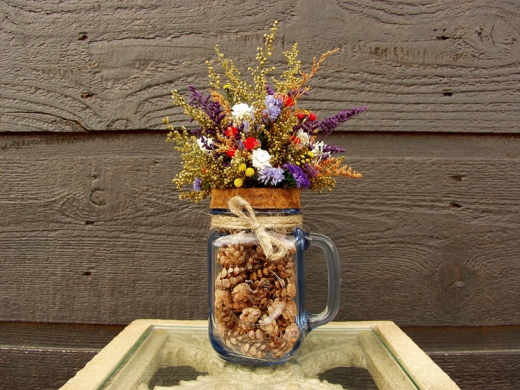
Ikebana from dried flowers completely corresponds to the literal translation of this concept – “a new life of flowers”. If in ikebana from fresh flowers, each flower receives, thanks to the environment, a new sound, then in the “dry” ikebana the bouquet extends its life in a decorative work.
Traditional Japanese ikebana is built according to strict canons, the masters put philosophical meaning into it. In order to create a classic ikebana, you need to study for a long time, but for our purposes – it is enough to observe the simplest rules. The main one is the “rule of the three lines.” According to it, ikebana consists of the wrong triangle created by three lines: the long branch “Heaven” (in Japanese “syn”), the middle one – “Man” (“soe”), the small one – “Earth” (“hikaye”).
Observing this rule, include your imagination – the individuality of the artist is extremely important in ikebana. Two identical ikebans should not exist.
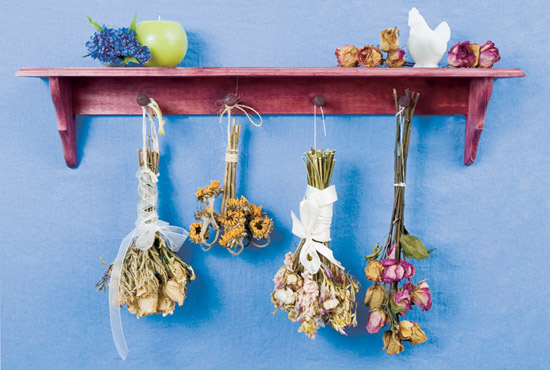
Collect the flowers you need in the late dry morning. Remember that after drying, the color of plants changes – red flowers darken, light colors turn yellow. The least change are blue, pink, purple, orange shades. Many plants can be dried in the form of a ready-made bouquet – limonium, cattail (similar to cane, many of them are confused), bristle (decorative millet), other cereals. Shrub chrysanthemums, lavender, fragrant grasses are better to collect in small bundles and to dry, hanging down inflorescences. For better preservation of color, they can be wrapped in thin paper.

Much faster dried flowers in the microwave. But with this drying you need to be very careful – to turn on the oven for a few seconds and check the flowers every time. After this drying – you need to dry the material in a couple of days in natural conditions.
A hydrogel is suitable for drying any colors. In a flat container (preferably sealed), the hydrogel layer is poured and the buds are laid, which are neatly covered with the hydrogel completely (between the straightened petals). With this method, the natural shape of the flower does not change. Flowers should be checked regularly and regularly, as there is a risk of drying them (they become brittle and brittle).
It will be useful to you and the old way of drying plants – between sheets of books or albums. In this case, you need to choose beautiful flowers or petals, given that after drying they will become flat. This form is also used in ikebana, as well as in wall decorative panels.
Here are some examples of making decorative compositions from dried plants:
Flower potpourri
Dehydrated buds, leaves, stems should be placed in a flat basket or dish. Top with flat petals. If you want the composition not only to rejoice the eye, but also to smell – sprinkle it with a few drops of essential oil. Remember that examples are not models for imitation, but a push for your creativity. The resulting composition can be a daily decoration or decoration of a festive table.
Composition of lavender, lime and cones
For it you will need citrus crusts, lime, leaves and flowers of lavender, small bumps (you can use alder, pine or cedar). Crusts of citrus must be dried in advance, like flowers. They look very beautiful, if you cut off a thin spiral, which is then easily divided into any fragments.
Method of preparation of components:
- Lime needs to be cleaned and cut into thin rings. It can be dried overnight in a conventional oven with a minimum heating temperature.
- Olhovye (or other) cones are stacked in a plastic bag for several hours. Add a few drops of essential oil with citrus aroma – the cones will get an extra smell.
- Put all the ingredients in a flat decorative dish, sprinkle a small amount of ground ginger, place the petals of dried hydrangea on top. Vase or dish is best chosen from transparent glass, so that all the components can be seen.
Initials for celebrations decorated with dried flowers
Such an ornament can be made from fresh flowers. In autumn or winter, pre-dried small bouquets of dried flowers are suitable for him. Letters (initials, congratulations) you can choose any, like the font for them.
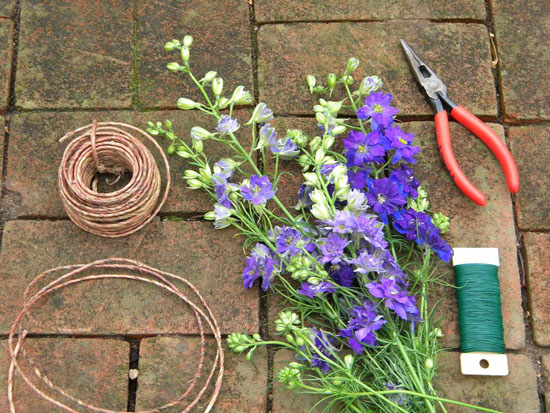
From a flexible wire we make a skeleton (letter) of an ornament.
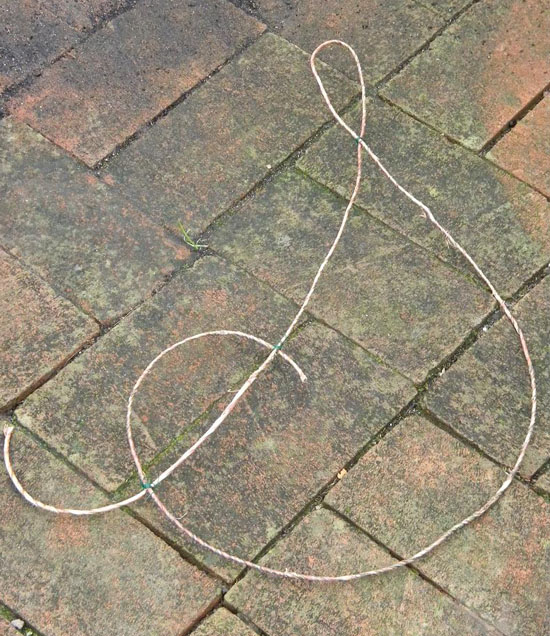
Here are used live bouquets of larkspur (delphinium). At other times of the year, dried flowers can be used. Fasten bouquets on the frame with a thin green wire.

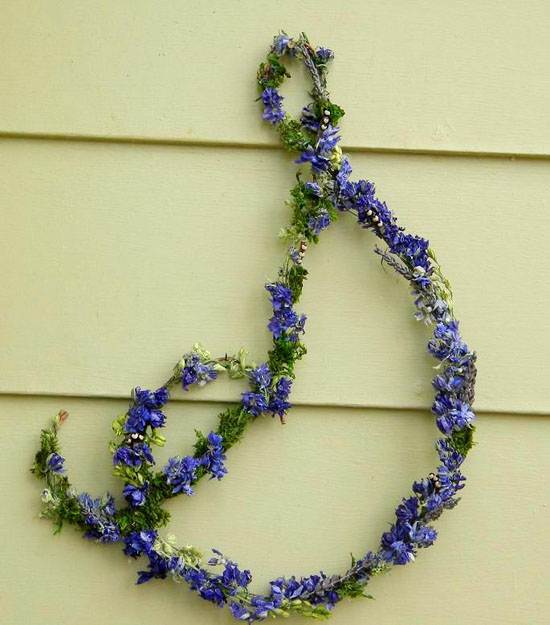
Postcards, wall panels, watercolor drawings
All these ornaments can be made with the help of dried flowers, individual petals, improvised materials – cardboard, glue, scraps of tulle or fabric, beads. This kind of work can attract children – it’s exciting and good to develop.
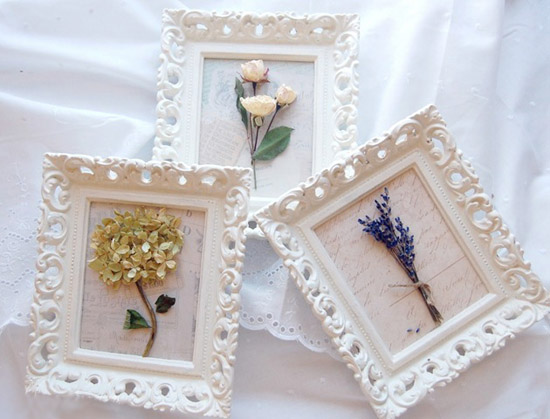
Perfectly combined glued petals with a watercolor pattern. You can use thin stems.
Beauty and naturalness
For ikebane and other ornaments from dry plants, you can use any materials that do not crumble when dry: home catarrhatus flowers, indoor and natural ferns, yucca, dried berries, small cones, dry twigs, wild flowers, laurel, ornamental grasses, yarrow, roses, peonies, hellebore, a large sedum. For better preservation, the composition can be opened with varnish for indoor plants or with ordinary hair spray. Do not expose the ikebana to direct sunlight – it burns out. Dust can be cleaned with an ordinary fine brush.
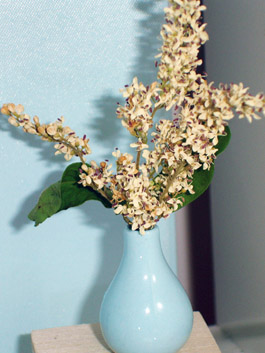
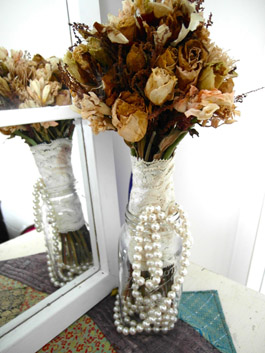
You can also see articles such as:
Live flowers in the design of interiors
Interior decoration with fresh flowers
Author: Mikhail Bond

05.05.2023 @ 17:53
se Google Translate to translate the comment into the appropriate language)
Russian: В конце весны наступает прекрасное время – первые цветы расцветают. Красивые полевые цветы, которые полны зеленых лугов, не уступают им лесным и садовым цветам. Кто из нас не собирал цветы, чтобы положить букет дома? Многие бережно сохраняют высушенные розы, полученные в подарок в один из запоминающихся дней. К сожалению, обычные букеты быстро увядает, начинают крошиться, их приходится выбрасывать. Обычное высыхание лепестков между страницами книг – это хорошее воспоминание, но не украшение дома. Тем временем, японские мастера икебан успешно используют высушенные цветы (как, впрочем, и другие природные материалы) для создания полноценных украшений домашнего интерьера. При этом каждый из них индивидуален, связан с вашими воспоминаниями, дорогими вашему сердцу. Икебана из высушенных цветов полностью соответствует буквальному переводу этого понятия – “новая жизнь цветов”. Если в икебане из свежих цветов каждый цветок получает благодаря окружающей среде новый звук, то в “сухой” икебане букет продлевает свою жизнь в декоративной работе. Т